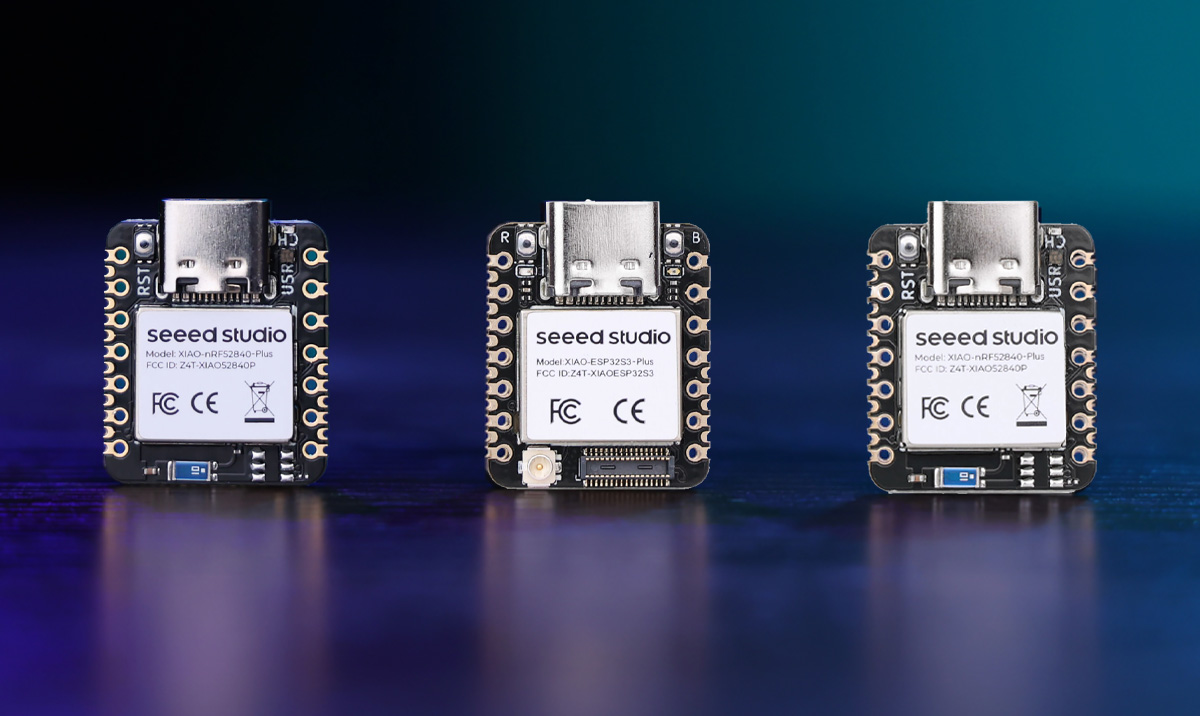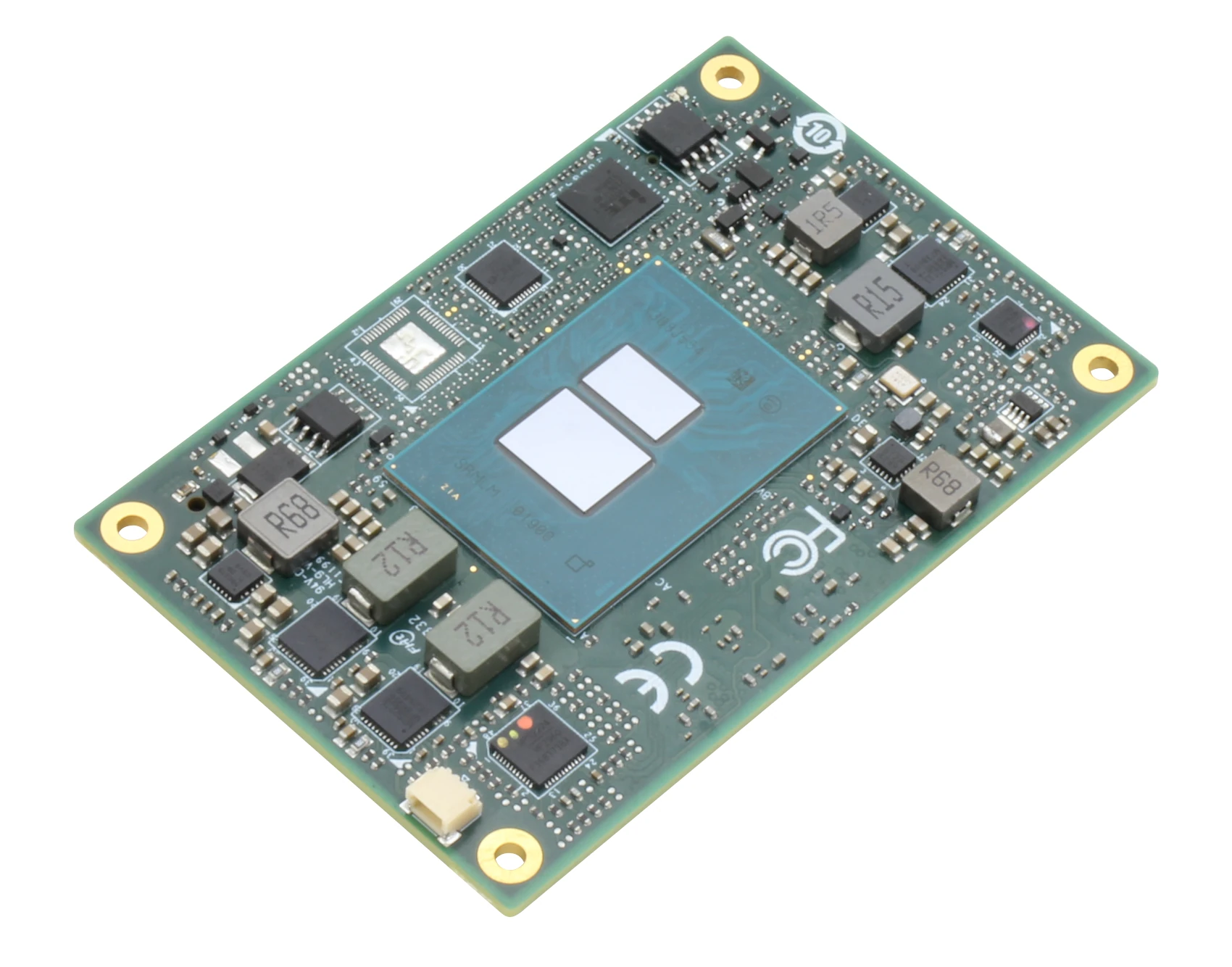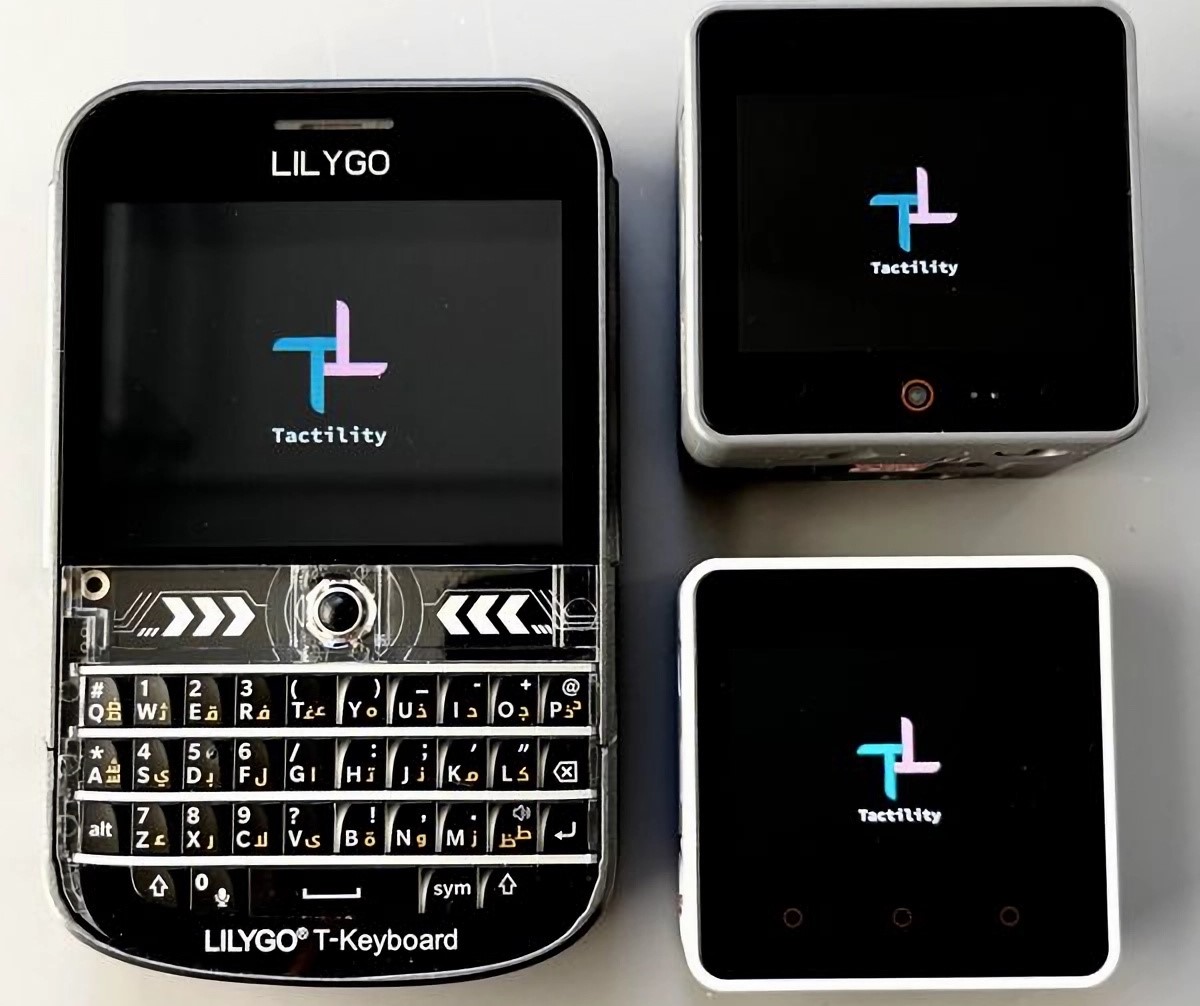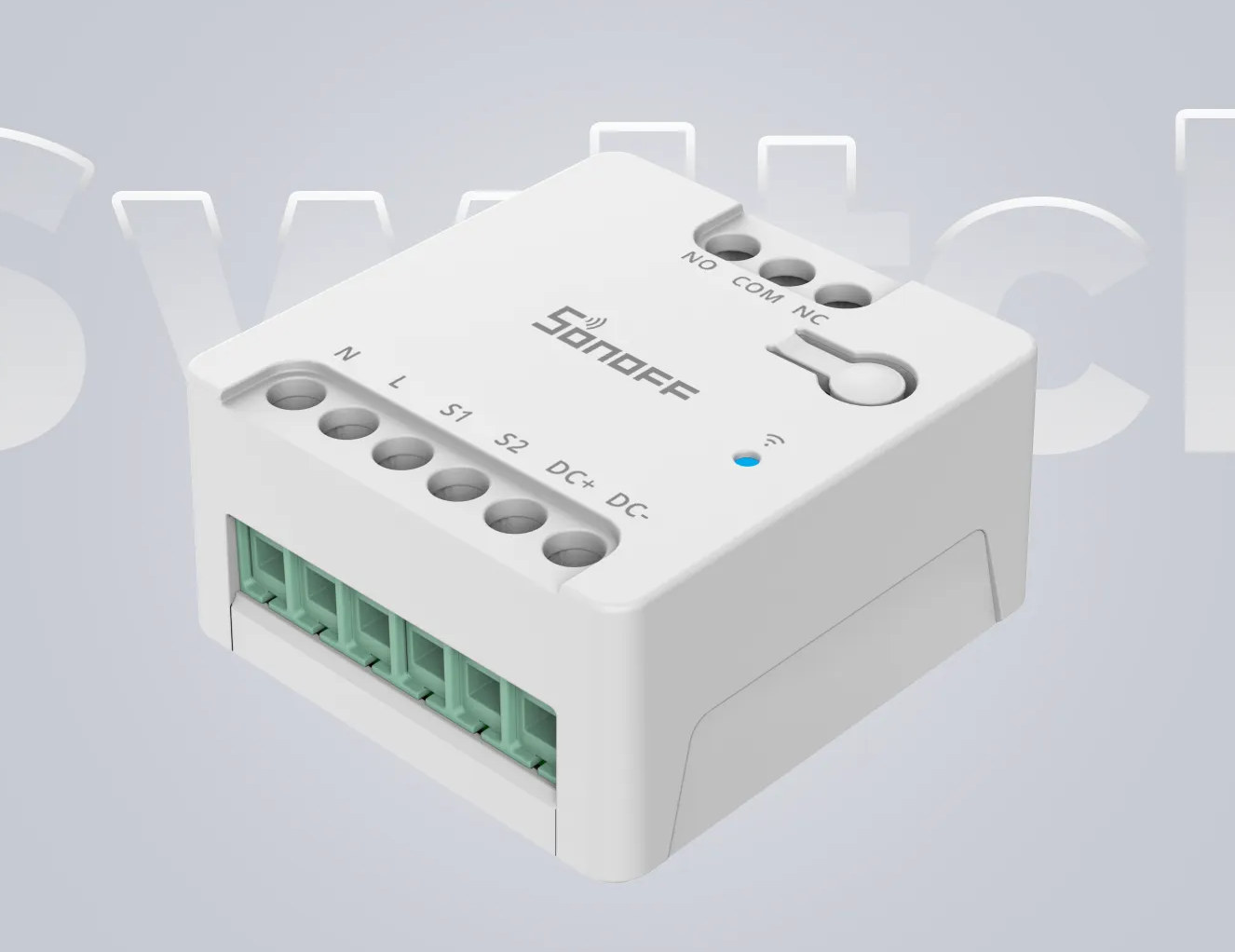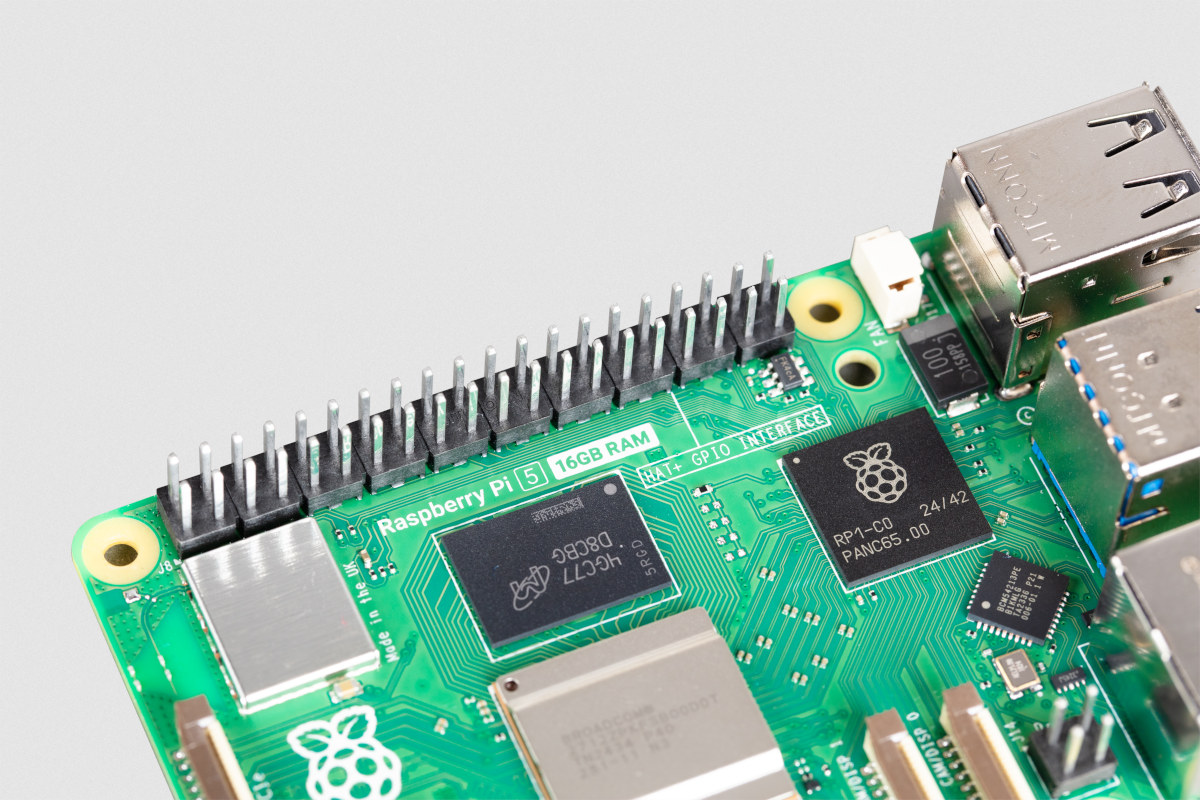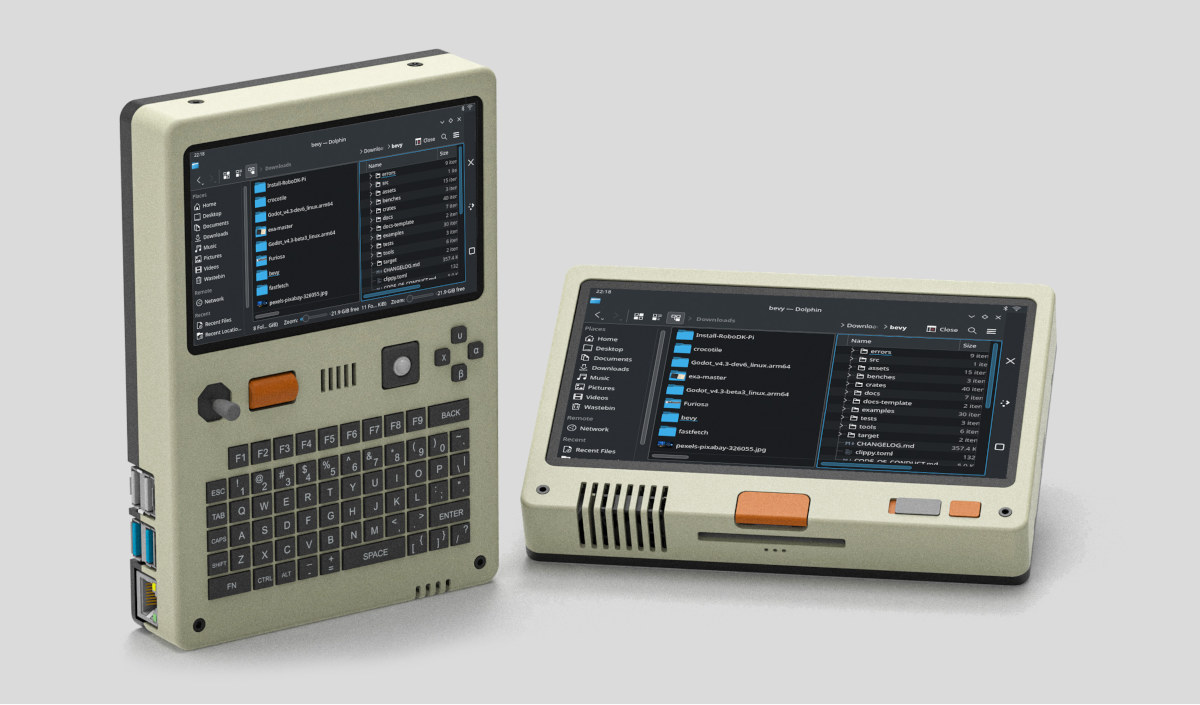In response to community feedback for more I/O options, Seeed Studio has recently launched the Seeed Studio XIAO Plus series with 23 castellated mounting pins (20 GPIOs, 3 power pins) and improved back solder points, improving compatibility with carrier boards for complex projects. The new series includes the XIAO ESP32S3 Plus, XIAO nRF52840 Plus, and XIAO nRF52840 Sense Plus which are direct upgrades of the XIAO ESP32S3, XIAO nRF52840 BLE, and XIAO nRF52840 Sense boards. The new design allows for easier assembly and scalable production, with double the I/O options. XIAO ESP32S3 Plus The Seeed Studio XIAO ESP32S3 Plus is a compact development board with a total of 23 pins on the board out of which 11 are through-hole GPIO pins 9 additional SMD castellations GPIO pins and 3 through-hole are power pins. The board is built around an ESP32-S3 MCU so it has 2.4GHz WiFi and BLE 5.0 connectivity. Other […]
NanoCOM-ADN – A COM Express Type 10 Module based on Intel Alder Lake-N SoC
AAEON NanoCOM-ADN is a compact (84 x 55mm) COM Express Type 10 module based on Intel Alder Lake-N SoCs, namely Processor N50/N97, Atom x7425E, or Core i3-N305 that adds another option to the SMARC, Qseven, and COM Express Type 6 modules offered by the company with the same processors. The NanoCOM-ADN computer-on-module features up to 16GB LPDDR5x soldered-on memory, up to 64GB eMMC flash, and two Intel i226-V 2.5GbE controllers. Its standard 220-pin COM Express board-to-board connector exposes two SATA interfaces, four PCIe Gen3 x1 interfaces, DDI and LVDS video outputs, eight USB interfaces, and more. AAEON explains the Alder Lale-N COM Express Type 10 CPU module is especially suited to digital signage, healthcare imaging, machine vision, industrial, robotics, and edge computing applications. AAEON NanoCOM-ADN specifications: Alder Lake N-series SoC (one or the other) Intel Atom x7425E quad-core processor up to 3.4 GHz with 6MB cache, 24EU Intel UHD […]
Tactility “operating system” for the ESP32 microcontroller family supports built-in and external applications
Tactility is an operating system that runs on the ESP32 microcontroller series. Created by Dutch software developer, Ken Van Hoeylandt (also known as ByteWelder), Tactility is a project one year in the making inspired by the Flipper Zero and its application platform. The ESP32 operating system can run built-in apps and helper services from flash storage as well as external applications from an SD card. It leverages the Espressif ELF(Executable and Linkable Format) loader to load ELF files from external storage to the executable memory area. Tactility is built to run on any ESP32-based device with a touchscreen since drivers (display, touch, and SD card) can be implemented for any hardware. ESP32-S3 devices are “the best option” due to their performance and larger memory. The LILYGO T-Deck series is highly recommended for its onboard keyboard and sizable display. Preset configurations are available for the LILYGO T-Deck Plus, LILYGO T-Deck, M5Stack […]
Raspberry Pi 5 edge AI computer ships with 8GB RAM, Hailo-8 AI module, supports Frigate NVR
Seeed Studio’s reComputer AI R2130-12 is an Edge AI computer with a Raspberry Pi 5 SBC with 8GB RAM and a Hailo-8 module with 26 TOPS of AI performance, suitable for video analytics, machine vision, and intelligent edge computing. The computer comes with a HAT+ with two M.2 sockets, one occupied by the Hailo-8 AI accelerator and the other available for an M.2 NVMe SSD. In some ways, it’s just a nicely packaged Raspberry Pi 5 SBC with Hailo-8 AI accelerator that we reviewed last year. reComputer AI R2130-12 specifications: SBC – Raspberry Pi 5 with 8GB RAM AI Processor – Hailo-8 M.2 AI accelerator module with 26 TOPS Storage microSD card slot, with support for high-speed SDR104 mode Optional M.2 NVMe SSD via M.2 PCIe 3.0 slot Video Output – 2x micro HDMI ports up to 4Kp60 Camera/Display I/F – 2x 4-lane MIPI camera/display transceivers Networking Gigabit Ethernet RJ45 […]
Tanmatsu handheld terminal features ESP32-P4 RISC-V MCU, QWERTY keyboard, WiFi, Bluetooth, 802.15.4, and LoRa connectivity
Tanmatsu is a handheld terminal device for hackers, makers, and tech enthusiasts based on the 400 MHz ESP32-P4 RISC-V microcontroller, including a QWERTY keyboard, and supporting various connectivity options with WiFi, Bluetooth LE, 802.15.4, and even LoRa in the 433 MHz or 868/915MHz bands. The handheld computer also features a 3.97-inch MIPI DSI display, a built-in speaker and a 3.5mm audio jack, and various expansion connectors such as a Qwiic connector for I2C/I3C modules, and PMOD and SAO expansion connectors. Tanmatsu specifications: Microcontrollers Espressif ESP32-P4 dual-core RISC-V microcontroller @ 400MHz with 32MB of built-in PSRAM WCH CH32V203C8T6 32-bit RISC-V microprocessor @ up to 144 MHz with 20KB SRAM, 64KB flash used for keyboard matrix and power management Storage 16MB flash for firmware MicroSD card slot supporting SD cards at 3.3v and 1.8v voltage levels (SDIO 3) Display – 3.97-inch MIPI DSI display with 800 x 480 resolution, 65,536 colors Audio […]
SONOFF MINI-D – A Matter-compatible WiFi smart switch with dry contact output for garage doors, boilers, etc…
SONOFF MINI-D, also called SONOFF Mini Dry WiFi Smart Switch, is a Matter-compatible smart switch with dry contact output suitable for controlling devices like garage doors, boilers, air conditioners, and other dry contact input equipment, as well as small DC motors (8W max) such as pumps and solenoid valves. It’s designed to support 12-48V AC or DC inputs, handle low-power DC motors up to 8W, and can be wired as Normally Open (NO) and Normally Closed (NC). Like other SONOFF devices, it’s controlled with the eWelink app, but Matter support means it can integrate with other apps such as Amazon Alexa, Google Home, Apple Home, etc… SONOFF MINI-D specifications: Wireless SoC – Espressif ESP32-D0WDR2 (so ESPHome firmware support is likely… eventually) Connectivity – 2.4GHz WiFi Misc LED for network status, pairing mode, and switch type selection Button for ON/OFF, pairing mode, and external switch type selection. Max load 24V DC/2A […]
Raspberry Pi 5 with 16GB RAM launched for $120
Considering the Raspberry Pi CM5 is available with up to 16GB RAM, it should come as no surprise that the Raspberry Pi 5 also got its own 16GB LPDDR4 RAM upgrade. But the extra memory does come at a premium since the new board sells for $120, a $40 markup compared to the Raspberry Pi 5 with 8GB RAM. The extra memory should bring the user experience closer to a desktop machine for browsing the web with multiple tabs, checking emails, watching YouTube videos, and more all at the same time. Besides multitasking, the 16GB RAM may also be beneficial when running generative AI workloads like LLMs and VLMs which are known to be memory-hungry. Raspberry Pi 5 16GB specifications: SoC – Broadcom BCM2712 “D0” stepping CPU – Quad-core Arm Cortex-A76 processor @ 2.4 GHz with crypto extensions, 512KB per-core L2 caches, 2MB shared L3 cache GPU – VideoCore VII […]
Pilet is a Raspberry Pi 5-powered modular, portable computer with 5-inch or 7-inch display, optional built-in keyboard (Crowdfunding)
Pilet is a modular, open-source hardware, portable computer designed for the Raspberry Pi 5 SBC, and equipped with a choice of displays, keyboards, and an optional battery module that can last for up to 7 hours. Two models are available: the Pilet 5 with a 5-inch display, an integrated keyboard, a trackball, a scroll wheel, a navigational switch (D-Pad), and game buttons, and the Pilet 7 with a larger 7-inch display and support for detachable modules such as a keyboard, gamepad, or deck. Pilet specifications: Supported SBC – Raspberry Pi 5 Storage – MicroSD card, NVMe SSD via module Display Pilet 5 – 5-inch IPS MIPI DSI display with 1280×800 resolution, capacitive touch screen. Pilet 7 – 7-inch IPS MIPI DSI display with 1280×800 resolution, capacitive touch screen. Video Output- 2x micro HDMI ports Networking Gigabit Ethernet RJ45 port 802.11ac WiFi 5 and Bluetooth 5.0 Optional LTE cellular via module […]


